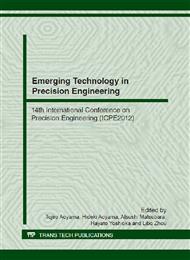p.557
p.563
p.569
p.575
p.581
p.587
p.592
p.598
p.604
Multi-Scale Product Design and Lifecycle Simulation System for Nano Product Design
Abstract:
Product designer is demanded to harmonize technical, economic, social, and environmental aspects of designing product. It is important for product designer to get the overview and the forecast of the property and the influence of the designing product by computer simulations. In order to support product designer and material designer, multi-scale product design and lifecycle simulation system is proposed. The multi-scale product design and lifecycle simulation system consists of multi-scale product design and simulation (MPDS) sub-system and product lifecycle simulation (PLS) sub-system. Concept of MPDS sub-system is an expansion of concept of current CAD/CAE system. Multi-scale products from micro/nano scale level to human scale level are designed continuously in the MPDS sub-system. Concept of PLS sub-system is an expansion of concept of current LCA system. PLS sub-system carries out product lifecycle simulation and evaluation of designing product. PLS sub-system is designed from the point of view of the interactions of subjects. The information of designing product is projected into PLS sub-system as a structured token including product information made by MPDS sub-system. Then, PLS sub-system carries out product lifecycle simulation.
Info:
Periodical:
Pages:
581-586
Citation:
Online since:
November 2012
Authors:
Price:
Сopyright:
© 2012 Trans Tech Publications Ltd. All Rights Reserved
Share:
Citation:


